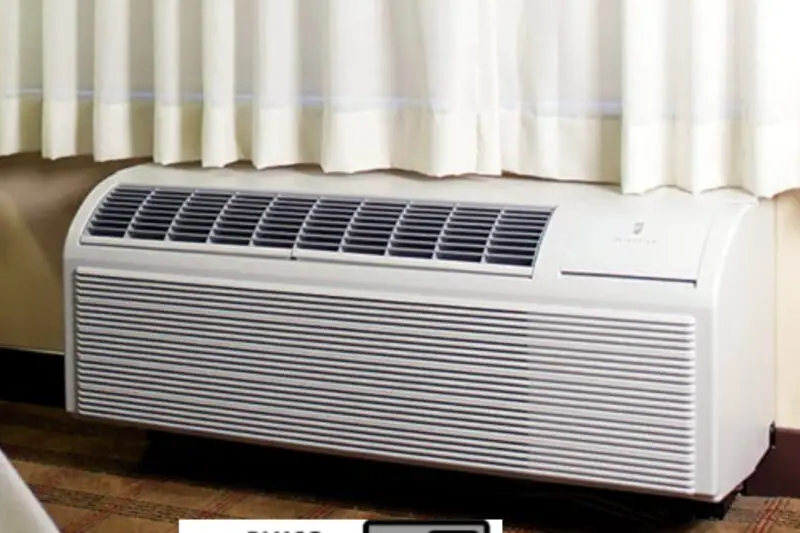Several factors can be used to assess the quality of Packaged Terminal Air Conditioners (PTAC). Maybe you’re seeking the quietest PTAC device on the market. If so, you’ve come to the correct place—we searched through the most-recommended ptac air conditioner installation
choices to identify the greatest one in this category. Read on to find out Which PTAC Units Are the Quietest, and when you’re ready, call our specialists at (929) 447-2077 for extra PTAC unit assistance.
GE Zoneline wins the award for the quietest PTAC unit! Quietness is measured using three criteria:
- Capability to muffle outside noise.
- The unit’s volume when in use.
- Excellent audio quality.
Do you require a PTAC that exemplifies the simple luxury of a silent room? Continue reading to see how GE Zoneline can help with this and other issues. This article will explain why GE Zoneline is the quietest PTAC in the business.
With so many options, it is deciding which air conditioner to purchase may be a difficult and frightening task. That is why we have created a comprehensive AC purchasing guide to assist you in determining what to look for when purchasing a new AC unit.
The Quietest PTAC Unit

PTAC units are often used in hotels and other business enterprises to chill or heat individual rooms at a time. This is because they are inexpensive and simple to install (with no ductwork needed).
We observed that the industry’s dominant brands have established their own standards for what it means to make a silent device. Information overload can make it tough to determine which PTAC to purchase.

As a result, our solution to this conundrum is to center on the reader—you. We pursued the most straightforward formula imaginable, imagining your wants as a prospective buyer. GE has spent a significant amount of time developing this formula in order to create the silent PTAC.
1. Capability to muffle outside noise
Because the PTAC fills a gap in the external wall, it effectively becomes a part of it. We anticipate that it will provide some noise isolation. We’ve come across this topic the most in our search to identify which PTAC is the most silent.
Sound Transmission Loss (STL) is a barrier’s capacity to prevent sound from going through. STL is measured in a laboratory using the ASTM E90 standard procedure.
To assess how much sound was “lost” or blocked by the barrier—in this case, a PTAC-equipped wall—pink noise of known strength is played from the source room and measured in the receiving room.
STL is translated into two ratings based on which frequencies (pitch) are prioritized:
Outdoor/Indoor Transmission Class Sound Transmission Class (STC) (OITC)
Higher grades on both of these criteria indicate superior insulation. Let’s dig a little more into GE’s ability to shut out outdoor noise.
Classification of Sound Transmission (STC)
STC was the first of the two STL ratings to be developed and is still commonly used today to measure the efficacy of soundproofing. It places a high value on frequencies associated with the human voice. The STC rating of GE Zoneline is 29.
A Word About Amana
Amana, GE’s competitor, promotes their Q series PTACs in the same way. Recent advances have propelled Amana to the top of this class, with an STC score of 31. They accomplished this by covering the vent door.
This is significant because PTACs are typically utilized in small and medium-sized rooms, such as apartments with kitchen hoods. In addition, depending on the purpose of your room, innovations in construction technology may allow for a tightly-sealed enclosure, implying the need for soundproofing.
While this does help to keep outdoor noise outside, it also increases the risk of depressurization when used in conjunction with exhaust fans or range hoods. Lower air pressure, or depressurization, hinders exhaust systems from working correctly. Nobody wants to smell like their lunch from the day before.
Amana’s ventless design blocks makeup air, which is filtered and temperature-controlled to compensate for range hood exhaust. Get an Amana PTAC drain kit installation
So, what makes GE unique?
With their GE Zoneline PTACs, GE provides dual benefits in terms of quietness and preventing depressurization via makeup air.
Let us proceed. Another rating is gaining traction as a more solid foundation for soundproofing capability.
Outside Inside Transmission Classification (OITC)
While STC is more concerned with preventing noise from the neighboring room, OITC was created to specifically assess how much external noise is minimized. This disparity is due to the fact that, when compared to STC, OITC gives more weight to lower frequencies.
Because most external noise is low-frequency, such as street traffic, construction, and low-flying planes, this is crucial.
GE Zoneline has an OITC rating of 21.
2. The Unit’s Loudness
Aside from its capacity to isolate outdoor noise, we compared the GE Zone line’s sound power (volume) to that of its nearest competitors. Good power is measured in decibels or dBA. As perceived by the human ear, lower dBA equals quieter. That is what we are going for.
Amana was once again the most prominent competitor. GE outperforms the competition by about 3 dBA.
3. Audio Quality
What do you think? This one could be said to be subjective. One might prefer the continual rumble of railroads to shuffled foot traffic, or crowds at marathon events to ambulance sirens. What one person finds acceptable may not be acceptable to another. Furthermore, what is nice to hear can differ from ear to ear.
The good news is that once we reduce this query to PTAC sounds, it becomes answerable. In this GE white paper, a 200-person jury of diverse ages blindly chose the better-sounding PTAC.
Since Amana performed well in prior categories, they faced GE again. In adjacent hotel rooms, the study’s PTAC units simulated ordinary life. Each organization had equal capacity units to compare fairly.
Each unit was put through various common functioning modes by the facilitators. From start-up to low-cool, high-cool to high-heat pump, and so on. As a way of quantifying this subjective question, participants assessed the noises during each mode.
Aside from rating the sounds in each setting, participants were asked questions such as:
Do you find any of these sounds repugnant?
Would you like your stay at this hotel?
The results were as obvious as the day that day. In 63 percent of the tests, GE outperformed Amana. Furthermore, Amana was only selected over GE in 8% of testing. When compared to Amana’s units, the GE Zoneline has a superior sound.
How Can I Lower PTAC Noise?
If you have an existing PTAC that is noisy to use, you can use one of the noise reduction solutions described below:
Plan Your Room’s Layout
Have you ever stepped into a room with nothing but walls and windows and clapped your heart out? It’s surprising how much furniture dampens sound.
When sound bounces, it can amplify. Rather than allowing it to bounce, allow it to be absorbed. Some materials, such as wood, can absorb sound and reduce its intensity. Consider placing indoor plants, soft furnishings, or soft anything, as they all have the capacity to absorb the rattle and hum of your PTACs.
PTACs in tight hallways or corners are inconvenient (acoustically speaking). If relocating is an option, try to face them toward as much open space as possible.
Cleaning and Maintenance Should Be Done Properly.
It requires regular cleaning. It may appear apparent, but ignoring this easy chore from the start can come back to harm you later. Clogged air filters, for example, can cause your PTAC to continuously whistle. Once a month, we recommend cleaning or replacing the air filters.
A healthy maintenance program also includes preventive maintenance and damage inspection. You can solve small issues yourself or consult the user’s manual. However, if you hear strange sounds emanating from the unit, it’s better to call AC maintenance pros to inspect it.
Upgrade It
Consider using a noise-canceling blanket. Inquire with the maker of your PTAC for suitable accessories.
Aside from the suggestions given above, consider replacing your PTAC with a newer, more efficient model. Newer models are generally quieter than previous models.
How Long Can A PTAC Operate?
A PTAC can survive up to 7 years on average, and up to 10 years if properly maintained. As a result, most PTAC-producing firms, such as LG and Amana, emphasize the significance of regular cleaning and maintenance to extend the life of your unit.
You’ll discover that replacing your old PTAC can be a cost-effective means of cutting utility expenses in the long run, especially if your device is far past its useful life. When the emotional time comes to let go, search for rebate offers from your local power company to decrease the cost of replacements and cheer you up.
Final Thoughts
When the quiet operation is essential, we propose the GE Zoneline PTAC. We hope this article has aided you in your hunt for the quietest PTAC device. Visit our site for more assistance with ptac installation near me or call (929) 447-2077 and ask about PTAC Units VS Mini Splits right away.



No Comments
Be the first to start a conversation